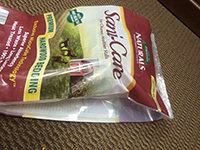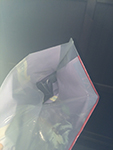How does Sani-Care perform compared with other types of large animal bedding?
We believe it is the best value, providing superior total-package performance in terms of animal health, safety, absorbency, and ease of use.
How long has Sani-Care been used for horses?
The Brunners, owners of The Espoma Company, have been using Sani-Care in their horse barns for over 25 years. Their farm consists of two barns: one for horses and one for miniature horses. It is because of their extraordinary satisfaction with the product that they decided to make it available to other large animal lovers.
How absorbent is Sani-Care?
Sani-Care is extremely absorbent, thanks to the premium hardwood species blend, heat treatment and proprietary MicroCube Technology™ manufacturing process—absorbing over 300% moisture per unit weight!
Is Sani-Care edible?
Animals may ingest small traces of any bedding. Sani-Care is not a food source, which discourages most animals from eating it. Animals should not eat any bedding material as it will eventually jeopardize health.
Does Sani-Care contain harmful chemicals?
No. Sani-Care is all-natural and does not contain paper sludge or chemical additives of any kind.
How clean is Sani-Care?
Our manufacturing process assures no contaminants and is heat treated to sanitize the bedding material.
Is Sani-Care more expensive than other large animal beddings?
Sani-Care lasts four to eight times longer than other bedding materials. Factor in the health benefits, reduced time and labor and Sani-Care represents an excellent overall value as compared to all other bedding materials.
Does Sani-Care contain mycotoxins?
Absolutely none. Mycotoxins are byproducts of mold growth. They are the residue of mold that has already been destroyed.
Are all wood beddings as good as Sani-Care?
No. Sani-Care goes through additional processing to cleanse and lower dust levels that no other wood chip competitors can duplicate. In addition, some other wood beddings are made from cedar or pine species which have aeromatics that have been shown to be detrimental to animals.
Why can a Sani-Care bag leak sometimes?
The Sani-Care bag is a plastic version of an industrial package known as a valve bag. The filling tube is inserted into the valve to fill the bag with material. This is a manual process and if the operator filling the bag overfills the bag, the material in the bag gets inside the valve and prevents it from collapsing and self-sealing. The degree of leakage is proportional to the amount that the bag is overfilled. When filled correctly to the bottom of the filling tube, the valve can self-seal and leakage is prevented. So the only time a Sani-Care bag leaks is when it is overfilled and there is too much material in the bag. See the pictures below to view what the valve in an empty bag looks like.


Can Sani-Care be used for chickens?
Yes, Sani-Care can be used as poultry litter. Refer to our technical section for further information.
Are there other uses for Sani-Care?
General Absorbent – Sani-Care is an excellent absorbent for all accidental spills including oil spills. Simply sprinkle Sani-Care over the spill until fully absorbed and sweep up. Dispose of saturated material according to local regulations when the spill contains hazardous or toxic substances.
Should Sani-Care be mixed with other types of bedding?
In order to experience the full benefits of Sani-care it is best to start with a dry, stripped stall. We do not recommend mixing sani-care with other bedding products.
What is the source for your hardwoods? Do you practice sustainable forestry?
Our manufacturing sites are close to the forests that are the source of our wood. All our source forests are managed for sustainability. For every tree harvested a new tree is planted. Wood is a valuable commodity and the primary use is for lumber. The process used to make Sani-Care® emphasizes the highest level of quality control at every turn. After finding the highest quality wood sources, we use only closed-van trailers to transport our hardwoods from sawmills to our production facilities. At all times throughout the process, we maintain a closed system to avoid contamination. The animal beddings are heat-treated and dried in rotary drums, reaching 1200 degrees Fahrenheit for 20 minutes. The moisture content is lowered this way to 8% (+/-2%), killing harmful bacteria. The product is then conveyed by air through sifters and screeners to produce a final particle size. Then, it is refined again using additional, innovative and unique equipment to further increase screening and aspirating. Note: Our product is virtually dust-free.
I am concerned about the use of hardwoods for horses. I see that there is no walnut in your bedding, but I have always been told that the tannins in maple can be harmful to horses as well. I do not know anything about birch or beech, but I am concerned about the maple.
The concern is valid for the foliage of the red maple also known as the swamp or soft maple. We do not source material for Sani-care from these trees.



